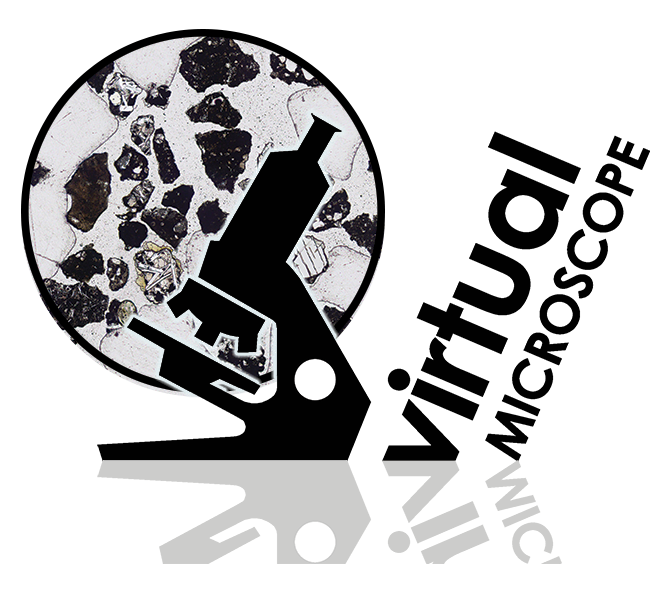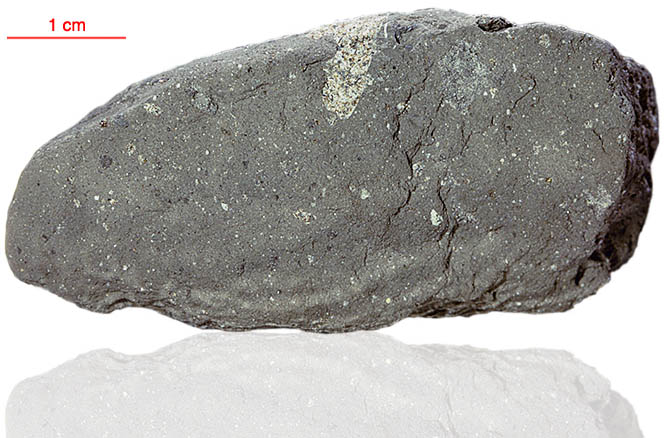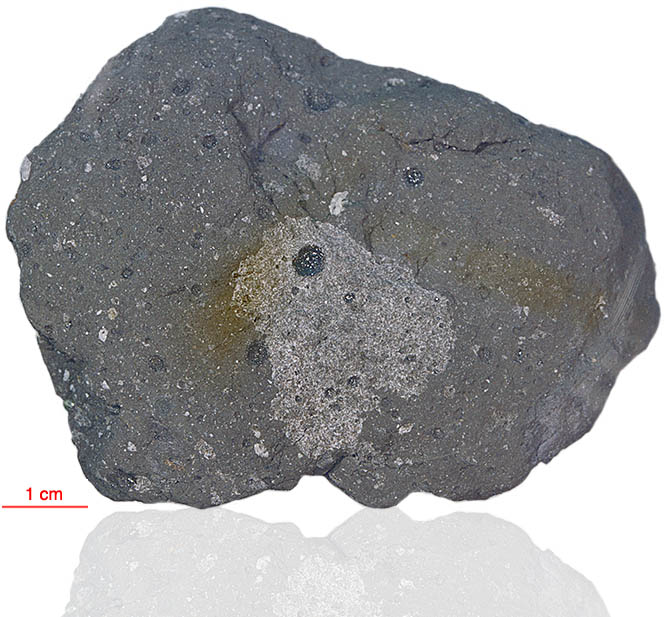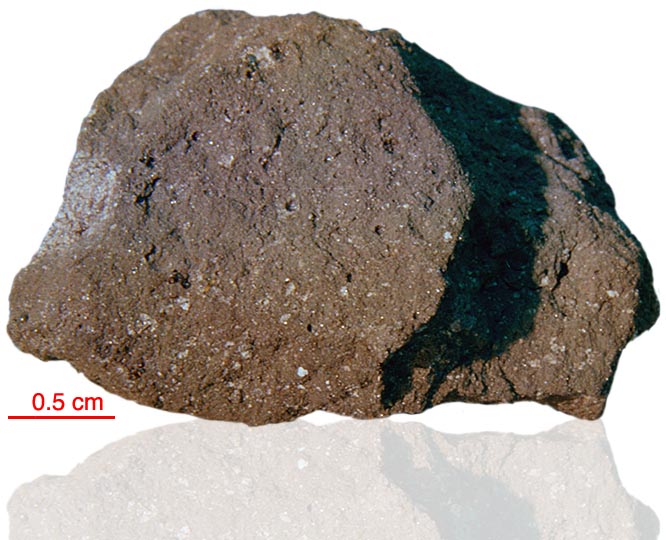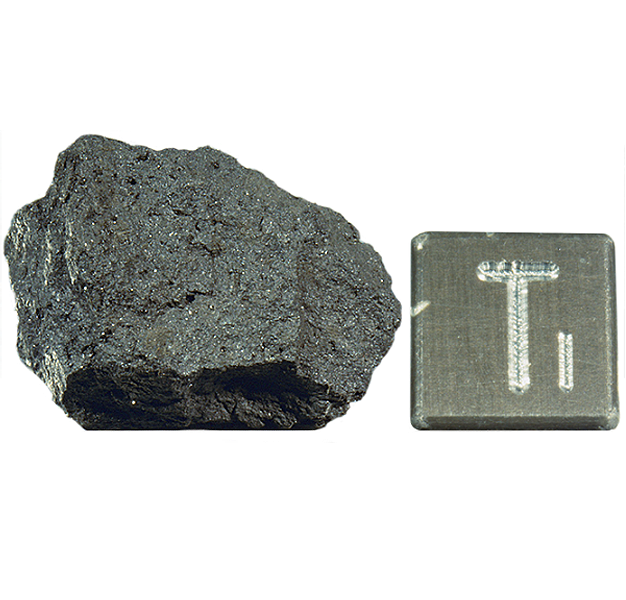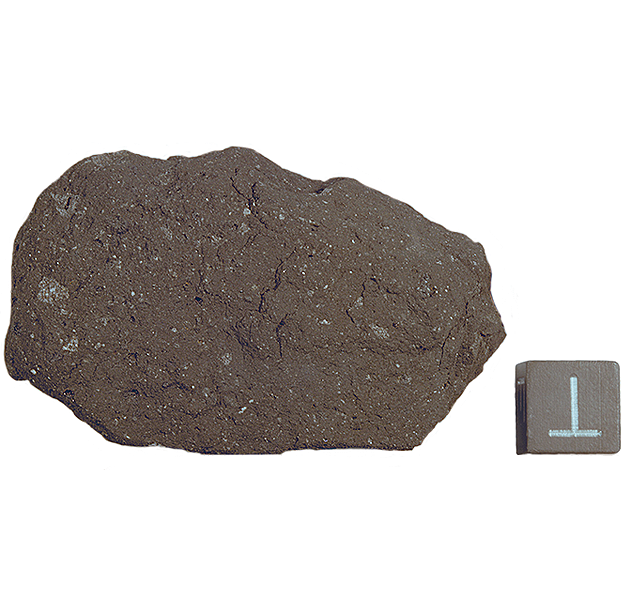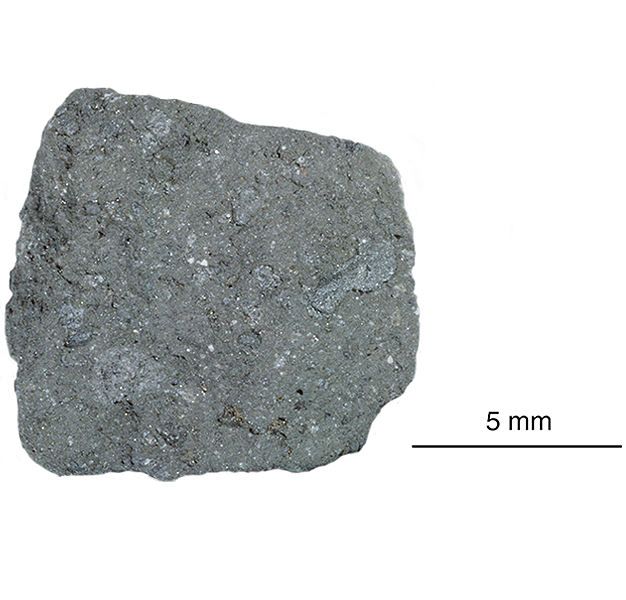
Fact sheet
Sample 10085 contains the coarse fines (> 1 mm) that remained after sieving a portion of regolith sample 10002. Approximately 250 thin sections were made from 10085 and these were widely distributed during the early allocations of lunar samples. The first anorthosites were found in this sample, however our sample is almost entirely lunar basalt. Other investigators have estimated that 37% of sample 10085 is basalt. The remainder is soil breccia (52%), glass (4%), anorthosite (2%), anorthosite glass (1.5%) and anorthosite breccia (1.5%).
Our sample mainly contains plagioclase feldspar, pyroxene and ilmenite (opaque crystals) with minor amounts of cristobalite and troilite also present (the latter visible as small yellowish crystals in reflected light). Note that the sample is slightly thick, so plagioclase feldspar shows yellowish colours in transmitted light instead of the "normal" shades of grey.
Further details of this and other Apollo samples are here: http://curator.jsc.nasa.gov/lunar/
The Apollo 11 samples create an iconic collection since they were the first rocks collected by humankind that were returned to Earth from another solar system body. The Apollo 11 team collected and returned 22 kg of rock and soil samples.
Apollo 11 launched from Cape Kennedy on 16 July 1969. An estimated 530 million people watched Armstrong's televised image and heard his voice describe the event as he took "...one small step for a man, one giant leap for mankind" on 20 July 1969.

